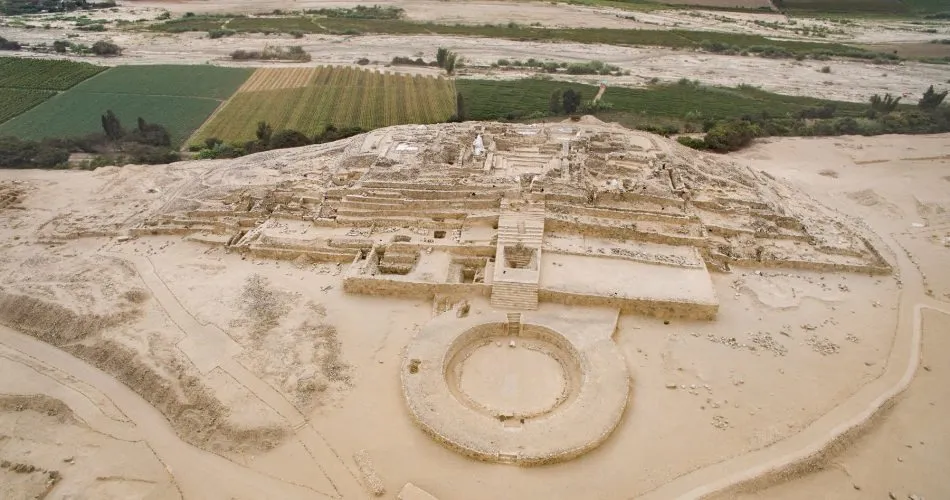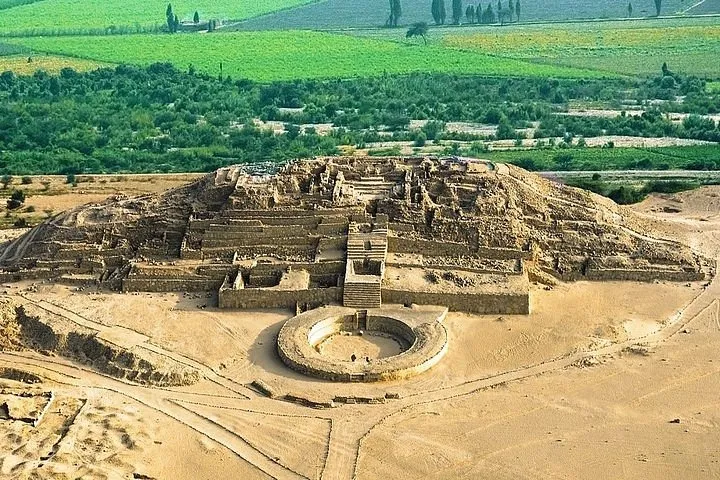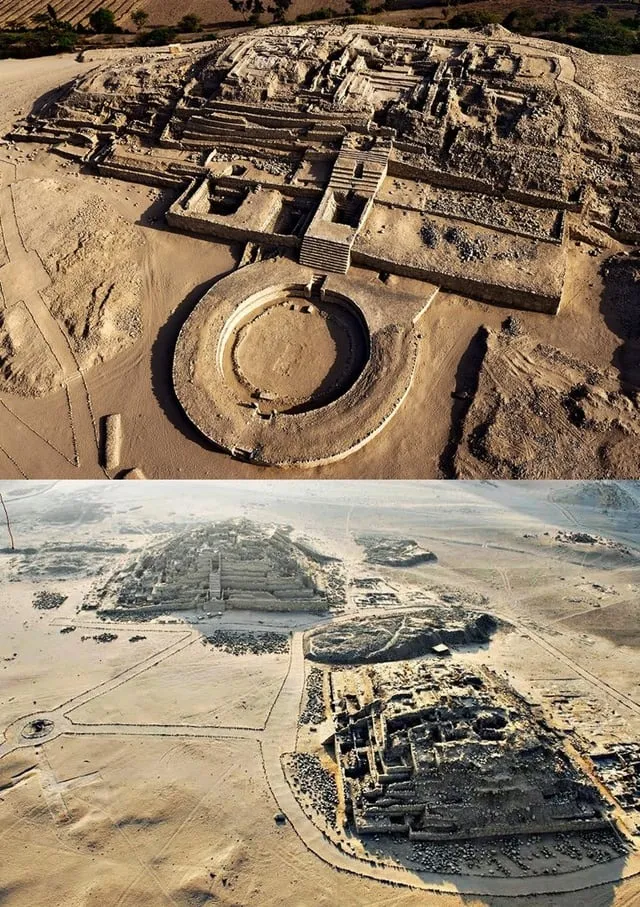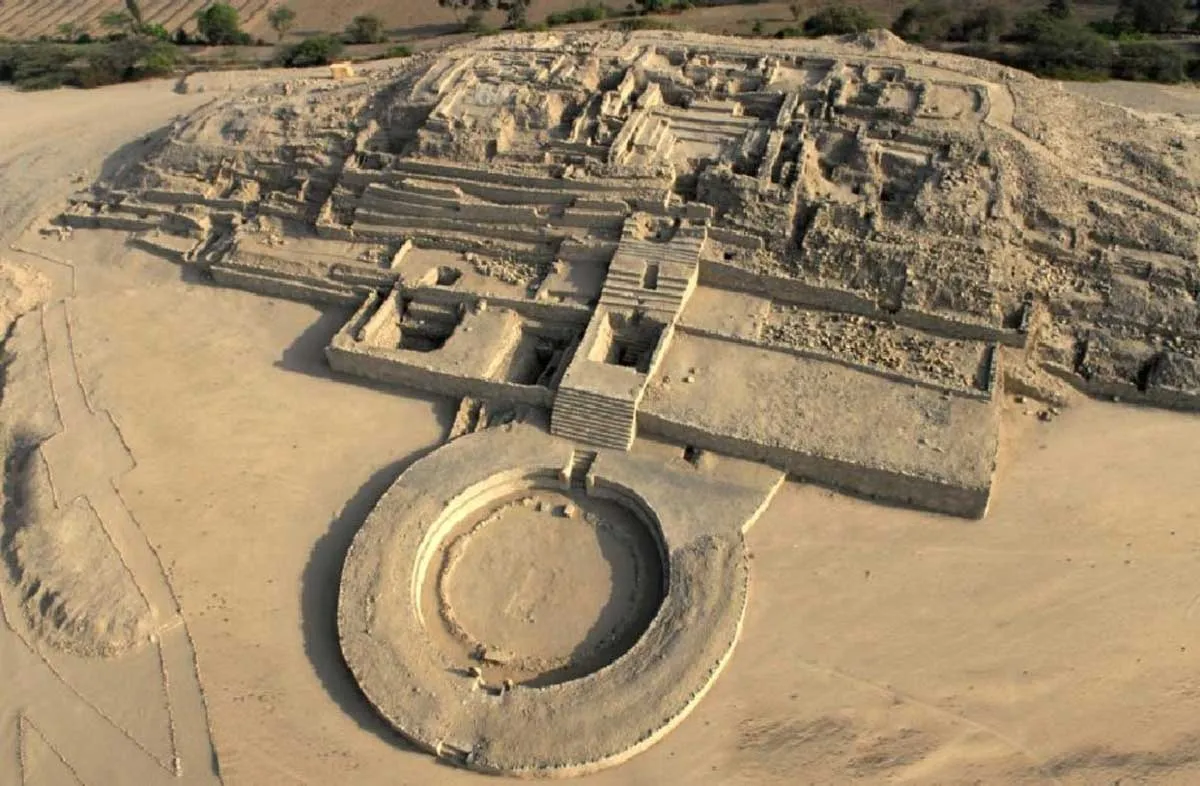Caral: The Most Ancient City of the Americas and its Striking Ancient Pyramids – Pyramidomania
Thousands of years ago, at a time when Egypt’s Great pyramids were being built, a civilization in Peru was thriving in the Supe Valley, around 200 kilometers from present-day Lima. The city, which we call Caral, was thriving metropolis more than 4,600 years ago.
Considered the most ancient city of the Americas, Caral was declared a UNESCO World Heritage Site more than 11 years ago.

Archeological excavations of the city and its surrounding have revealed fascinating information about the site. The city is believed to have been inhabited between the 26th and 20th centuries BC and encompasses a massive area of more than 60 hectares (150 acres). There, in an area now dubbed the “Sacred City of Caral-Supe,” lie the remains of not only a once-thriving city but the remnants of massive pyramids, some of which were contemporaneous with those of Egypt.
Archeological excavations have revealed enough evidence to suggests that Caral is the oldest urban center in the Americas. Analysis of the wider region eventually revealed that Caral was not a unique settlement dating back to such an extensive period in history. Radiocarbon dating obtained for other sites such as Bandurria has contested Caral as the oldest urban center in the Americas.

Archeological excavations at Bandurria, (some 30 kilometers away from Caral), point to the fact that more ancient cities existed in South America at the time.
Bandurria, for example, is an ancient city of stunning monumental architecture on the Huara River. Archeological excavations revealed traces of habitation spanning back more than 5,200 years. Radiocarbon dating results obtained from Bandurria suggest the site dates back to around 3200 BC, which would place it several hundred years before Caral.
Discovering Caral

The ancient city was found in 1948 by archaeologist Pail Kosoko, and although the discovery was meaningful, it received little academic attention mostly because it lacked typical Andean-style artifacts that were widespread on other sites.
Nearly thirty years went by until Carlos Williams, a Peruvian architect traveled to the Supe valley and made a detailed record of Caral and other sites.
Eventually, Caral caught the eye of scholars and the ancient city was explored by Ruth Shady who made note of the site’s intricate temples, the city’s amphitheater and houses. Archaeological excavation eventually revealed the site’s complexity and size. Data that was recovered showed that Caral was already a thriving city in the region when the Pyramids of Khufu, Khafre, and Menkaure were built in Egypt.
Caral is of great importance not only because it is home to striking temples and pyramids, but because of its age and what the culture that built the city means for South American History.

Among archeologists, the ancient city is regarded as the most extensively recorded site in the Andean region with conclusive data showing dates older than 2,600 BC.
More importantly, it has been suggested that Caral may have served as a kind of model for later urban design that was developed by Andean civilizations that came and went for thousands of years.
In fact, such is it important that scholars believe that Caral may hold the answers about the origin of the Andean Civilization and the development of South America’s very first cities.

An image of one of the stone temples at Caral, Peru. Shutterstock.
In addition to its temples, plazas and residential buildings, archaeological excavations have revealed numerous artifacts. The most notorious objects found at Caral include a knotted textile piece that experts have identified as a quipu. Quipus were ancient recording decides crafted out of strings by a number of ancient Andean Cultures.
Since no written language developed, Quipus were used to convey information. Most information recorded on Quipus consisted of numbers in a decimal system. Hover, some scholars have argued that far more than numeric information, the ancient Andean quipus were actually a writing system.
The discovery of quipus at Caral pushed back the history of the informational devices by several hundred years. In addition to the quipus found at Caral, archeological excavations also revealed woven carrying backs buried beneath the surface. These carrying bags were radiocarbon dated and revealed they are around 4,627 years old.
The bags at Caral were probably used to transport some of the smaller stones that were used in the construction of the temples and buildings.
The main structure at Caral is also its largest pyramid dubbed “Templo Mayor.” It is 150 150 meters (490 ft) long, 110 meters (360 ft) wide and 28 meters (92 ft) high. Although scholars have been unable to confirm its original construction date, the building could date back anywhere between 2,800 and 2,600 BC, when the very first structures were built at Caral.

An image showing one of the pyramid-temples at Caral, Peru. Shutterstock.
However, since the oldest layers of the city are yet to be excavated, there is a good chance that archeologists will find artifacts and even building that span further back in history.
Archeological surveys of Caral have revealed the existence of at least twenty stone structures, six of which have been identified as ancient pyramids. Unlike the pyramids of Egypt which are thought to have been tombs for the pharaohs, the pyramids of Caral served as ceremonial and political centers, and the structure known as Templo Mayor most likely served as a central building in the city through which the local leaders surveyed the rest of the city.
A massive, square structure has been found to connect the pyramids at Caral. The wider area of the city reveals an intricately planned city with stairs, rooms, courtyards, amphitheaters as well as sunken plazas.
Some of the pyramids at Caral may have included various rooms atop the pyramids that were designated for the city’s ruling elite.
In the immediate vicinity of Caral, experts have discovered smaller sites that may have accommodated—together with Caral—a population of around 20,000 people. The nearby sites all share architectural similarities with Caral, something that has led experts to believe that Caral was the focus of the ancient civilization which itself was part of a vast complex composed of commercial communities located all the way to the coast, and further inland.
In fact, the ancient people of Caral way have had a vast influence not only locally, but further away and as far as the Amazon perhaps. Researchers have discovered depictions of various animals including monkeys which suggest that the people from Caral engaged in commercial activity with cultures located in the Amazon.
The city was not characterized by war, as experts have failed to find any traces of warfare at Caral. No fortifications, weapons not mutilated bodies have been discovered at Caral which suggests this ancient civilization was an extremely peaceful society, built on commerce, culture, and religion.






